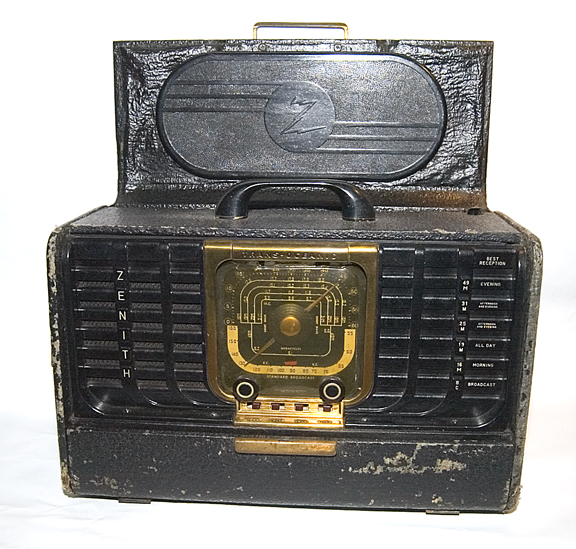
At left is what the radio looked like when I acquired it. This radio has some parts manufactured in mid-December, 1946, so it's probably early 1947 production. Cosmetically, the radio cabinet was in very poor condition.
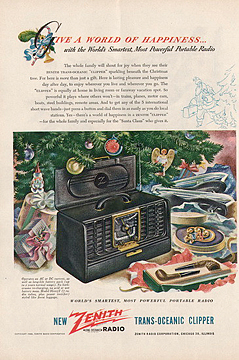
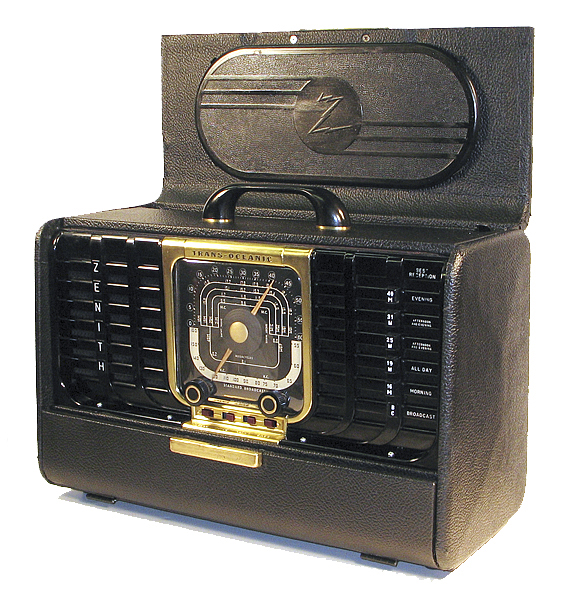
The 8G005Y, introduced in April, 1946, was replaced with the 8G005YTZ1 in 1948, and the 8G00YTZT2 in 1949. These last two models used a miniature rectifier tube.

At left is what the radio looked like when I acquired it. This radio has some parts manufactured in mid-December, 1946, so it's probably early 1947 production. Cosmetically, the radio cabinet was in very poor condition.
The Blag Stag covering was beyond salvation, so I completely recovered the cabinet with new black Tolex vinyl. I installed a new dial cover as the original was yellowed and had shrunk and warped somewhat near the top as can be seen in the photograph to the left. All the brass hardware was stripped of lacquer, cleaned, polished, and re-lacquered. When I attempted to restore the front plastic grill, I found that a previous owner had brush painted it with black paint, expect for the white lettering. It looked bad, and I couldn't strip the old paint off. I found a good replacement front on Ebay.
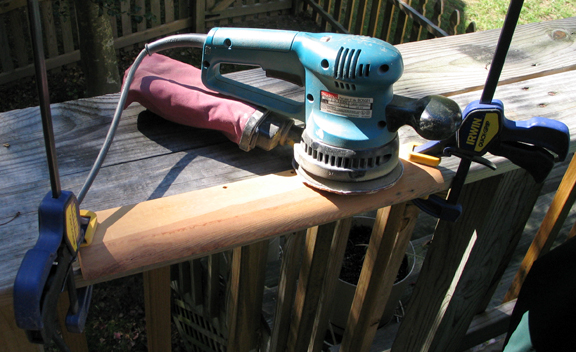 Otherwise, the radio appears all original and complete, including the knobs and all three antennas, along with the suction cups, connecting cables for the two Wave Magnet antennas, and the retaining clips. The whip antenna is intact, not bent, and extends and collapses smoothly. The chart/log book is present and in decent condition.
Otherwise, the radio appears all original and complete, including the knobs and all three antennas, along with the suction cups, connecting cables for the two Wave Magnet antennas, and the retaining clips. The whip antenna is intact, not bent, and extends and collapses smoothly. The chart/log book is present and in decent condition.
The dial cord was broken, so the first step was to restring the dial cord so the radio could be tuned. Next I rebuilt the AC/Battery switch. The voltage dropping resistors in the power circuit were way out of tolerance, so I replaced those. I eventually ended up replacing all but about three resistors. All the electrolytic and paper caps were replaced. Along the way, I replaced a number of crumbling wires. It took several days of cleaning and working the crud out of the band switches to get the radio to receive on the shortwave bands, but eventually, the radio began operating as it should, except for distortion in the audio.
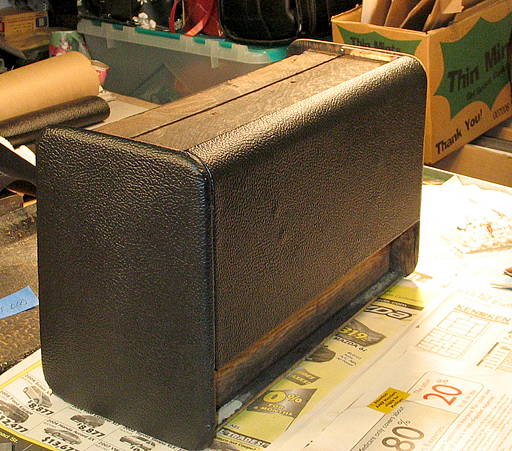
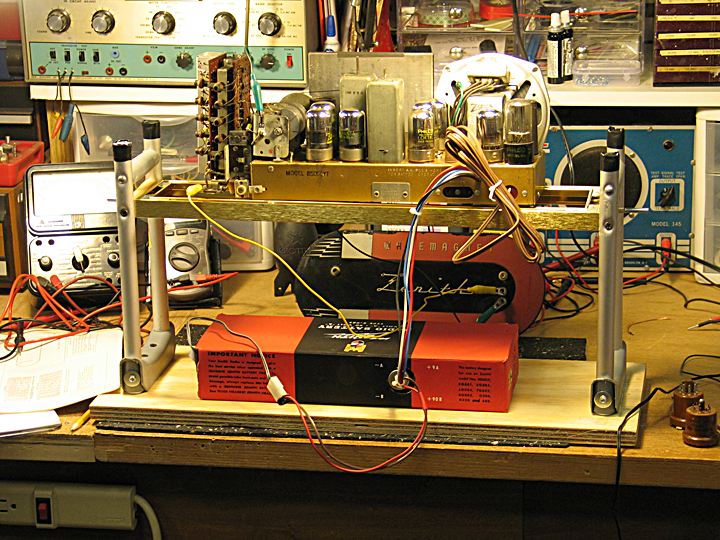
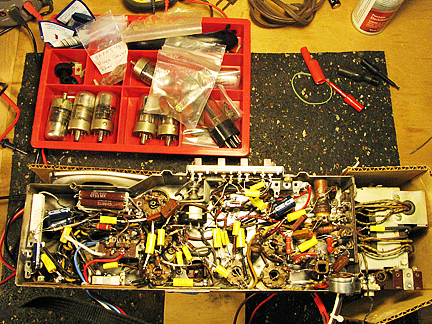
After several months of on and off tinkering with this radio, and no improvement in the distorted audio, I was thinking I should start looking for another chassis.
Then, reading about some audio problems with the solid state Trans-Oceanics resulting from mismatched output transistors led me to wonder if the two 1LB4 audio output tubes in the 8G005 could be the problem. Like the solid state Trans-Oceanics, the 8G005 series has a push-pull output stage, the only tube Trans-Oceanic with that design.
I don't have the right test equipment to match tubes, but I was able to order a pair of new-old-stock Sylvania 1LB4 tubes from Antique Electronic Supply. When they arrived, I installed them in the chassis, fired up the radio, and voila--audio with no distortion.

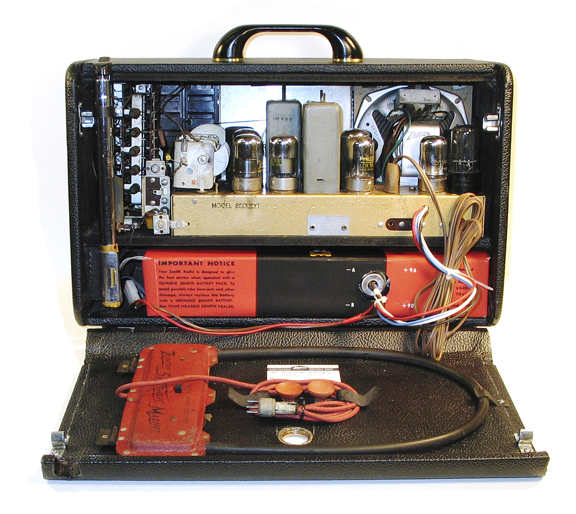
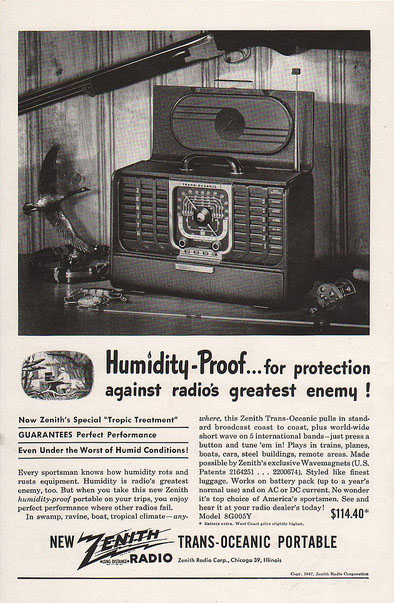

Click Here for Video
Click Here for a Step-by-Step Tutorial on Recovering a Zenith Trans-Oceanic Radio